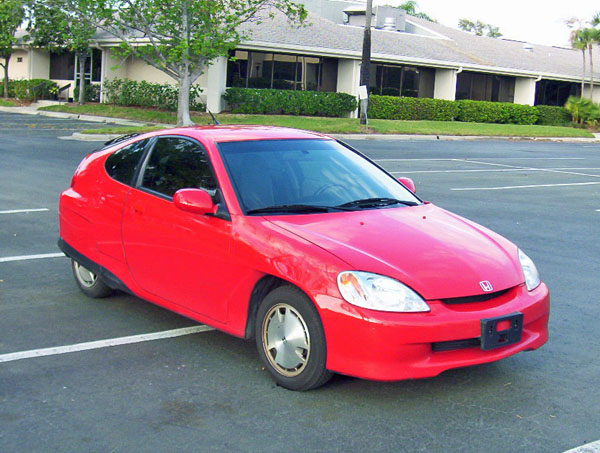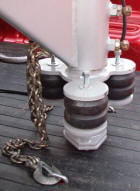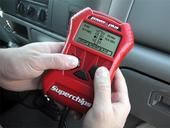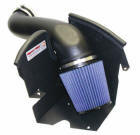Gaining Insight and Awareness into Hybrid Cars
By Doug Cooley

Now that Hybrid cars have been out in the US since 2000, numerous articles have been written with the typical pros and cons of Hybrid ownership. Having driven the Honda Insight for the past 3 years and gravely concerned about the slow acceptance of these new technologies by the general public, I wanted to discuss some issues that are typically overlooked in your average hybrid article. However, I am going to open the discussion on the number one reason, that these vehicles are getting so much attention: fuel economy.
- Fuel economy. I donít have to remind anyone about this issue, as many of us, now in the summer of 2006, pump $3./gal. fuel into our automobiles. Our experiences and attitudes originate from many sources. I started to drive in 1973, when gas was 25 cents a gallon, and almost simultaneously, the US experienced itís first oil embargo, sending fuel prices climbing. I remember then thinking that when gas reaches 50 cents a gallon, Iíll park my car and walk. Well, I didnít and fuel has climbed steadily ever since. In 2003 I hit my limit at $1.75/gal. and instead of walking, bought a lightly used Honda Insight Hybrid.
 I
had first heard of ďhybridĒ technology back in the early 80ís when a
magazine still in print called Mother Earth News, had a feature
article about an Opel GT having its gas engine ripped out and replaced
with a high amperage, aircraft style electric motor. Adding batteries
essentially made it an electric car, and the additional power source
that gave it hybrid status was a small gas engine (5hp/gocart type) that
drove a high output alternator. So you basically drove around this
electric car whose batteries were charged last night, and if you got low
on power, you could start the small gas engine and the alternator would
try to keep up with your power use, until you got home.
I
had first heard of ďhybridĒ technology back in the early 80ís when a
magazine still in print called Mother Earth News, had a feature
article about an Opel GT having its gas engine ripped out and replaced
with a high amperage, aircraft style electric motor. Adding batteries
essentially made it an electric car, and the additional power source
that gave it hybrid status was a small gas engine (5hp/gocart type) that
drove a high output alternator. So you basically drove around this
electric car whose batteries were charged last night, and if you got low
on power, you could start the small gas engine and the alternator would
try to keep up with your power use, until you got home.
 Although
I researched basic electric vehicles (EVs) and gathered the resources
and ideas to convert a conventional auto to electric, I repeatedly ran
into the realization that a practical daily commuter car in Florida,
where I was living at the time, needed air conditioning most of the
year. Not that the A/C problem was insurmountable, but the additional
power use and fact that when an electric car is at a stop light, the
motors shaft is stationary and thus unable to power an A/C compressor.
It was about then that I attended the 1999 Miami new car auto show and
to my amazement stumbled upon the Honda Insight prototype.
Although
I researched basic electric vehicles (EVs) and gathered the resources
and ideas to convert a conventional auto to electric, I repeatedly ran
into the realization that a practical daily commuter car in Florida,
where I was living at the time, needed air conditioning most of the
year. Not that the A/C problem was insurmountable, but the additional
power use and fact that when an electric car is at a stop light, the
motors shaft is stationary and thus unable to power an A/C compressor.
It was about then that I attended the 1999 Miami new car auto show and
to my amazement stumbled upon the Honda Insight prototype.
- Letís start throwing some numbers at you to try to get you through the learning curve. The very short and very sweet way to look at most hybrid engine installations is that they give you approx. a 25% fuel savings over a similar WEIGHT car with a conventional all gas engine. So as most car manufactures jump on the hybrid bandwagon, know that if they simply replaced the conventional gas power plant with a hybrid (gas/electric) power plant you can expect approx. a 25% savings. Your conscious will be a little clearer, your wallet/pocketbook a little less empty at the gas pump, but you are not likely to break even the 35 mpg barrier. What people often donít realize that besides the coolness of hybrid technologies, which are very cool, there isnít any real MAGIC. What I mean by this and what the designers at Honda and Toyota specifically realized as they developed the Honda Insight and Toyota Prius from scratch, is that is takes X amount of horsepower to accelerate a given amount of car weight. If car manufacturers continue to make behemoth, heavyweight cars the old way: steel, steel and more steel, in the end you still have a heavy car thatís going to need that extra horsepower to get itís carcass up to highway speeds. The Honda Insight specifically tackled this weight problem by making the structural passenger compartment ďcageĒ out of aluminum! The 3 cylinder 1.0 liter engine and all other major and most minor systems were put on a weight reduction program.
- Additionally, the Insight has the distinction have having the most ďair timeĒ of any production car, achieving a 20% fuel savings through super-efficient front end, bumper, grille, air dam systems, and narrowing the wheel base in back so the rear wheels fit under wheel covers to discourage air from entering the rear wheel wells and creating unwanted drag
- The next issue after pure fuel savings from these hybrid technology vehicles is the reduction in harmful emissions coming out of the tailpipe!! Very simply again the primary reason for these vehicle meeting these tighter emission standards, such as the SLEV (Super Low Emission Vehicle), is that the cubic displacement of most of these engines is considerable smaller. The Honda Insight is a 3 cylinder 1.0 liter engine, which by its size alone would emit much less emissions.
∑ SLEV (Super Low Emission Vehicles) typically feature:
- Computer controlled fuel injection and ignition timing
- Advanced valve systems promoting ďswirlĒ for more complete combustion
- Quick heating of catalytic converter
- A second catalytic converter for lean-burn conditions
- Various technologies that promote fuel economy
∑ When we start talking about tighter emissions standards the discussion can largely be centered primarily around 2 categories: Contributions to smog and health hazards, and Greenhouse gas emissions that contribute to global warming.
3. The last critical area I want to discuss about hybrid ownership / drivership is the often overlooked area of is the modification of the driverís behavior. As I started to drive my thrifty Honda Insight hybrid, I noticed that my driving habits and thus improved gas economy started to carry over, at least in part, to the other cars I occasionally drove.
∑ INSTANT readout of cars MPG. This instant feedback of the car and its driverís behavior quickly and repeatedly informed the driver when he was or was not optimizing his driving behavior. This instrumentation allows the driver to use each trip as a driving experiment. By leaving a little early on trips or a commute the driver can drive slower (I like 59 MPH) than his hectic co-commuters thus optimizing his MPG!! This learning quickly transferred over to the conventional cars I drove, slowing me down from the hectic 70 to 75 MPH I usually drove these vehicles. This Behavior Modification allowed for an easy 15 to 20 % fuel savings with no modifications to the vehicle, other than the altering of the driverís brain.
![]() Copyright 2006
© Doug Cooley , All rights
reserved.
Copyright 2006
© Doug Cooley , All rights
reserved.
|
|







